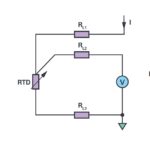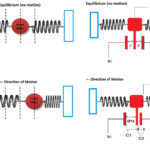 THine Electronics, Inc. releases its new serial transceiver products, THCS253 and THCS254, that enable systems with many peripheral sensors to simplify cabling for the sensor and control functions. These products enable reductions of system cost, size, and weight, and provide future options to add new sensors with minimal design efforts.
THine Electronics, Inc. releases its new serial transceiver products, THCS253 and THCS254, that enable systems with many peripheral sensors to simplify cabling for the sensor and control functions. These products enable reductions of system cost, size, and weight, and provide future options to add new sensors with minimal design efforts.THCS253 and THCS254 are the industry-first unique LSI products that can serialize different types of signals and can allow users to add additional sensor functions to systems by only changing registers’ settings.
For example, THCS253 can serialize sensing signals using 32 GPIO interfaces into 2 differential signals that can drastically reduce the number of cables and connectors by up to 88%. Users obtain excellent advantages not only in lowering costs, shrinking sizes, lowering weights, and reducing noise emission from many cables but also in improving productivity and quality in manufacturing processes by simplifying assemblies that previously would require many cable interconnects.
These new serial transceivers enable systems to be easily expanded with newly required sensing demands in the future. These types of expansions previously required extensive redesign efforts with high redesigning costs, but with the THCS253 or THCS254, only simple changes to registers’ settings are required. Users can set 32 GPIO pins on the THCS253s and 20 GPIO pins on the THCS254s as their intended signals. These serial transceivers also support up to 2 systems of I2C in addition to supporting independent clock signals of the main system board and of the function board with sensors, touch panels, etc. These industry-unique products allow future expansion for additional features on the same platform systems with minimal redesign efforts or any use of FPGAs that require time-consuming redesigns.
Since THS253 and THCS254 can reshape waveforms in their receiving circuit, they can transmit data for long distances of 10 meters. In general, without these new products, transmission distances of only about 1 meter would be possible. This allows users to have excellent flexibility in the layout of manufacturing sites or warehouses.





